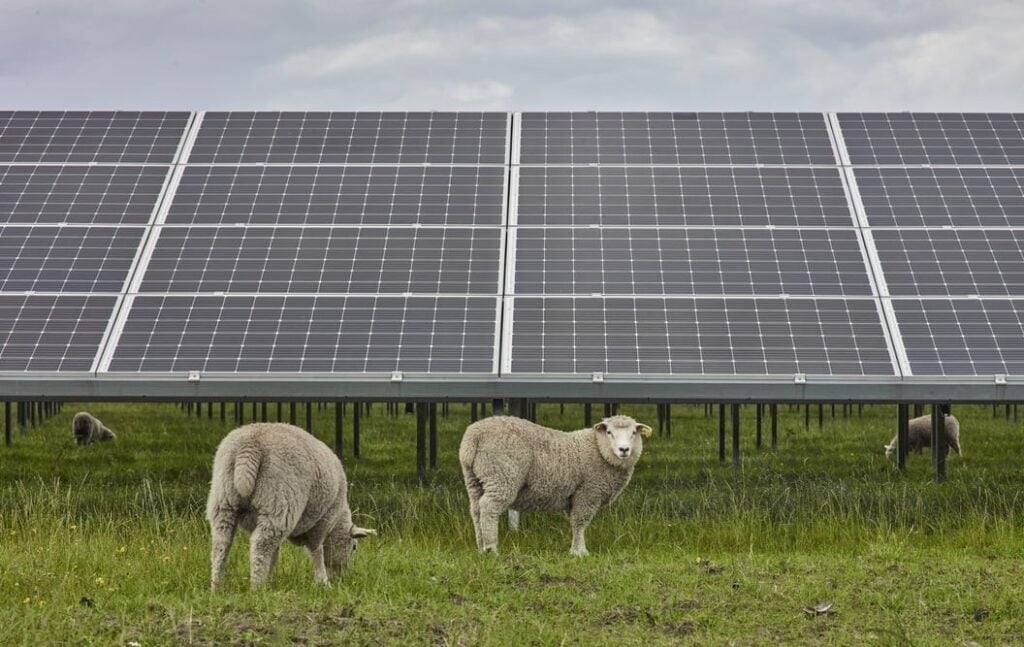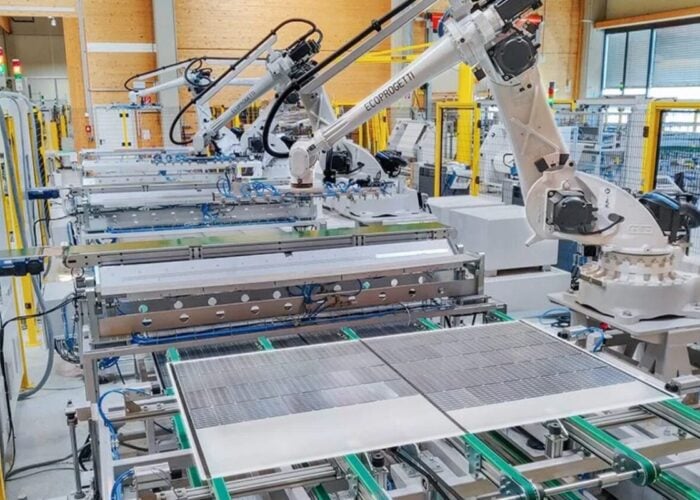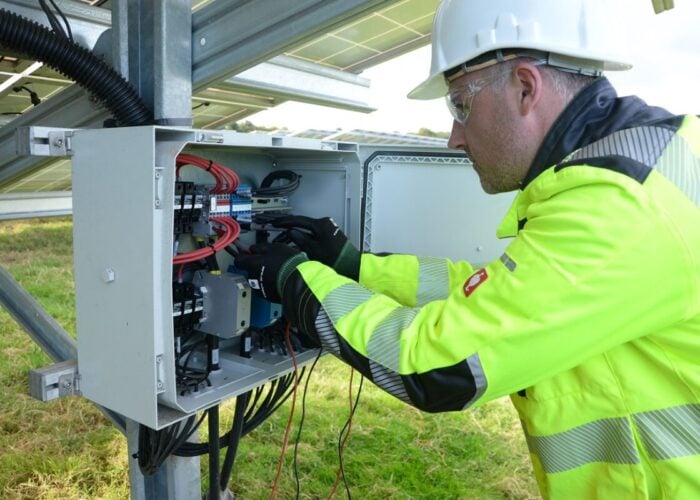
The manufacturing portion of the European solar sector boasts a lower carbon footprint, and falling material requirements, compared to other industries, which make it an attractive power source for the future of the European energy mix.
These are the headline takeaways from SolarPower Europe’s latest report into environmental, social and governance (ESG) compliance in the European solar sector. The report, ‘Sustainable Solar: Environmental, social and governance actions along the value chain’, breaks the European solar supply chain down into the manufacturing, use and end-of-life phases, and offers notes on Europe’s compliance with ESG criteria in these areas, and how the sector can improve its performance.
Try Premium for just $1
- Full premium access for the first month at only $1
- Converts to an annual rate after 30 days unless cancelled
- Cancel anytime during the trial period
Premium Benefits
- Expert industry analysis and interviews
- Digital access to PV Tech Power journal
- Exclusive event discounts
Or get the full Premium subscription right away
Or continue reading this article for free
“It is time for Europe to affirm its leadership and commitment to a cleaner, more resilient economy,” wrote Sara Matthieu, member of the European Parliament, in the report’s foreword. “A strong investment programme is key to this effort. We need investments that prioritise affordable renewable energy, not solely to address immediate needs, but also pave the way for the long run.”
“Affordable and accessible renewable energy is the bedrock of the European Green Deal, enabling businesses and consumers alike to benefit from zero-emission solutions, while creating economic opportunities across the continent.”
Strong supply chain performance
The report notes that many of the European solar sector’s successes come in the upstream part of the supply chain, with strong performances with regard to the sector’s carbon footprint. It is no surprise that the European solar sector has a smaller carbon footprint than other industries, such as fossil fuels, but the difference is striking; according to SolarPower Europe, the average lifetime solar PV system carbon emissions range from 10-43gCO2/kWh, a range that is 82-96% lower than the average carbon intensity of EU electricity in 2023, and 75-94% lower than the average carbon intensity of the 2030 target for the EU energy grid.
While some of this is derived from the fact that solar power, by its nature, does not involve the burning of fossil fuels, improvements in the efficiency of the solar manufacturing process have contributed to this positive forecast.
The graph below shows lifetime greenhouse gas emissions for solar modules made in three European locations, split between cadmium telluride (CdTe) and mono-silicon (mono-si) technologies. CdTe cells have drawn increased attention in recent years, in part due to the fact that they can be up to 70% cheaper to produce than other kinds of cells.
In September, US CdTe manufacturer First Solar opened a new manufacturing facility in Alabama, and the growth of a technology such as this, with a low carbon footprint and strong economic profile, could help deliver the kind of “affordable” transition highlighted by Matthieu.
Similarly, the SolarPower Europe report notes that, across the solar industry, improvements in manufacturing efficiency have lowered the material requirements for new modules, which will further reduce the cost of manufacturing. The trade body notes that, between 2004 and 2023, the use of silicon in PV cells has fallen by 86%, and this is forecast to fall by a further 36% by 2034 due to “increased efficiencies, thinner wafers and larger modules”.
The same can be said for silver, one of the most expensive materials used in module production. SolarPower Europe expects the solar sector’s silver consumption to decline by 40% for TOPCon modules, and 38% for PERC modules, between 2023 and 2034.
Further downstream, the SolarPower Europe report notes that solar has the potential to improve the productivity of land across Europe. The trade body draws on “various studies” that show that the use of agriPV can increase the productivity of the land by up to 70%, and this is to say nothing of the well-documented potential for Europe to exceed its solar installation targets using just 1% of the continent’s farmland.
Similarly, floating PV has significant potential in Europe, with a study from the Joint Research Centre suggesting that floating PV on reservoirs alone could add up to 157GW of capacity to the European energy mix. Of course, realising this potential is another matter, but both land use examples are causes for optimism.
Policy recommendations
The report notes, however, that there are areas in which the European solar sector could improve, and makes policy recommendations to this end. Upstream, the report calls for greater awareness of potential human rights abuses in the supply chain, particularly in the wake of the European Parliament’s passage of a law prohibiting the sale, import and export of goods associated with forced labour, and asks the European solar sector to “embed responsible business conduct into policies and management systems”.
The report also calls for European companies to better identify the “adverse impacts” of importing products and materials from outside the EU, more effectively track the movement of these items and “communicate how impacts are addressed”.
SolarPower Europe also calls on developers to engage more closely with local communities when proposing and installing community solar projects, noting that, especially in areas without much precedent for community solar, greater education and collaboration may be required. The report points to the Cedillo Solar Village, the first Spanish solar community, where Iberdrola sought to install PV panels on land owned by the city council, and opened a five-year window after the installation was complete for local people to sign up for the programme and receive electricity from the panels.
At the other end of the supply chain, the report suggests that the European solar sector could benefit from more recycling programmes for PV projects at the end of their operating life. This is particularly significant considering the disparity between the weight and value of various materials used in solar modules, as show by the graph below.
The graph demonstrates that, while glass accounts for the majority of weight in a solar panel, silver and aluminium account for the greatest monetary value, so the most cost-effective recycling schemes will be ones that target these commodities in particular, rather than just targeting glass as this accounts for the physically largest percentage of a panel.
The report calls on the sector to develop specific recycling schemes for high-value materials, and glass, and develop “sustainable” business models where recycling and end-of-life care is integrated into a company’s plan for an area right from the beginning.
With regards to other end-of-life work, the report goes on to suggest that PV modules, and adjacent technologies, should be designed in such a way that they can interact with future technologies, noting that mounting structures and inverters should be designed to interface with new modules. This is particularly significant considering the rate of technical innovation in the solar sector, where there are new cell efficiency records, and new module launches, happening frequently.






